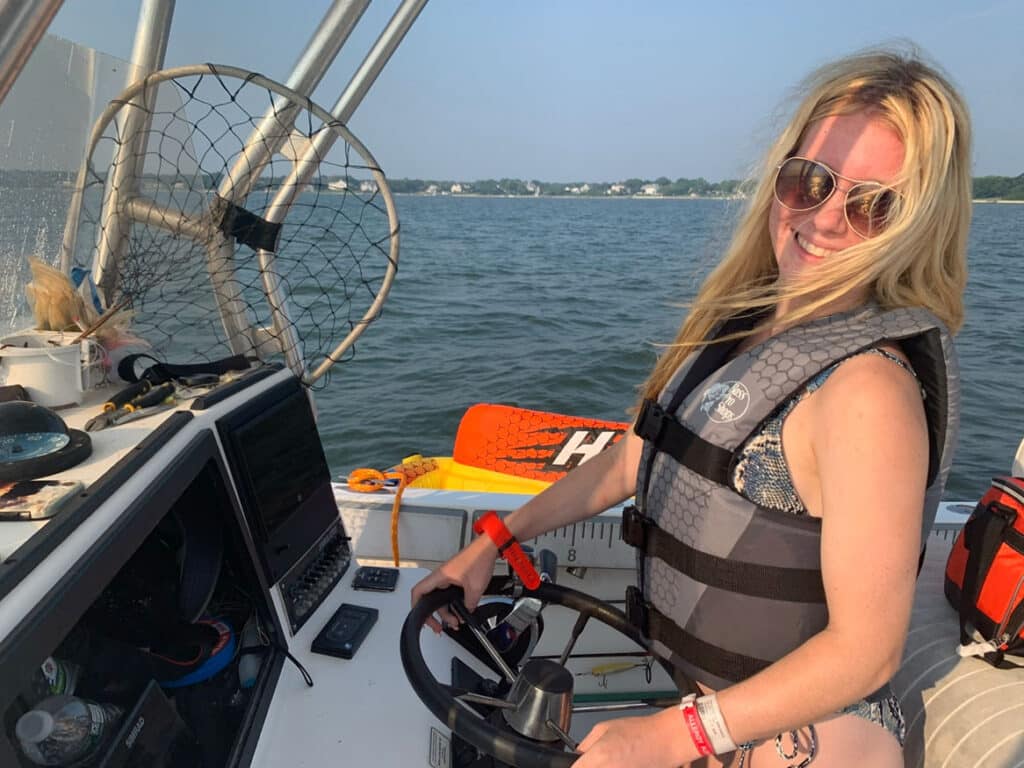For decades manufacturers have equipped boats with engine cut-off switches. A lanyard connects these switches to a life vest or belt loop, so if the operator leaves the helm while underway the lanyard pulls the switch and the motor stops. The devices aren’t new — they’ve been standard equipment since the 1980s — but Congress only recently passed a law making their use mandatory in all 50 states.

There’s good reason for the law. Accidents where the skipper is ejected or thrown from the helm are commonplace, and even if the operator stays in the boat, the time it takes to regain control can result in injury or even death. According to U.S. Coast Guard statistics, 260 reported accidents last year involved a person overboard, and 175 of those people never made it back to the boat.
A traditional hard-wired lanyard will stop the motor whenever the operator is ejected, incapacitated, or simply falls from the helm. It prevents the most terrifying predicament in boating – being in the water as the boat turns circles at high speed. It’s a simple, inexpensive and powerful safety tool.
One knock on lanyards is that they only stop the motor when the skipper leaves the helm. If a passenger falls out the boat will continue on its merry way until the operator or another passenger raises the alarm. That’s where the new generation of wireless devices comes in. They can protect everyone onboard. Base models usually come with two fobs and can be linked to several more.
This technology is invaluable on larger vessels where crew may be at risk of ejection without the captain being aware, and whenever children are onboard. Some boaters even clip fobs on their dogs, because pooches, like kids, don’t always sit! or stay! when you tell them to.
Several wireless engine cut off switch systems are on the market now, including the MOB+ from Fell Marine and the OLAS Guardian from ACR. Both wire into your boat’s existing engine cutoff switch and start at a little over $200. Fell also makes the engine-integrated 1st Mate system for boats over 25 feet, now compatible with all leading engine brands.
The systems vary a bit in the details, but work on a common principle: Everyone on the boat can be protected with a wireless fob worn on a wristband, neck lanyard or clip. The captain’s fob will cut the engine and activate an alarm within seconds of the transmitter losing connection, either by the wearer going overboard or moving too far from the helm. Passenger fobs activate the alarm, alerting the captain to a man-overboard situation.
The devices reset after about six seconds, so if the operator does end up in the drink a passenger can quickly restart the engine and pick him up. The OLAS (Overboard Location Alert System) units come with a smartphone app that helps in this regard. When the fob is activated it marks the coordinates of the incident using the GPS receiver in the phone or tablet. The app then displays a bearing and arrow pointing to the location.
All of those features add up to enhanced safety, but the best argument for wireless cut-off switches is that they’re less intrusive than traditional lanyards. That means they’re more likely to be used – every time. Wireless switches provide more mobility than a lanyard, and you don’t have to plug it in again every time you come back to the helm. That’s a big plus, especially for anglers who may stop and start dozens of times in a day on the water.
Whether you choose to use the hardwired switch installed by your manufacturer, or a wireless fob, use your ECOS. It’s the law, and it saves lives.








